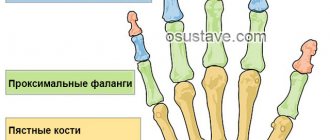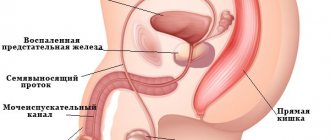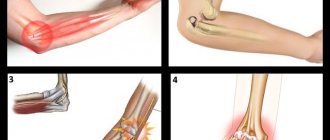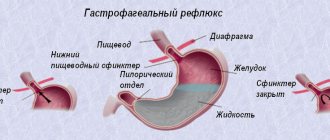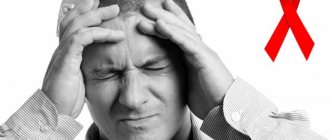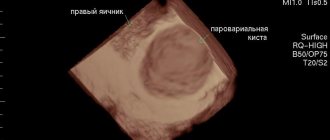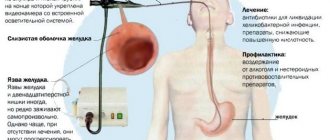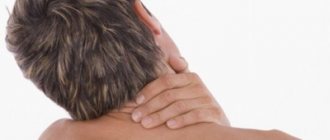“Happiness is like health.
When you don’t notice it, it’s there.”
I.S. Turgenev
When a person does not feel pain, he is happy. But how many tricks the body prepares for us! The human body signals the slightest illness or disruption of normal functioning through pain. A significant symptom for diagnosing diseases is joint pain. In medical parlance, joint pain is called “arthralgia.”
Every 5 people aged 30-35 years suffer from joint pain. Pain impulses can be short-term, long-lasting, focal and local.
Why do joints hurt, as evidenced by the pain syndrome? Painful sensations are the first symptom that irreversible changes are occurring in the joints. Arthralgia occurs due to irritation of neuroreceptors located in the joint structure. Such pain reduces the quality of life, and sometimes leads to a hospital bed.
Phantom pain
Phantom pain in both arms and legs has several properties: - A person experiences pain even after the damaged tissues have healed. For some, the pain goes away, while others feel it for decades, even after the damage has completely healed. Sometimes the painful sensations are similar to those that preceded the amputation. The trigger zone can occur on a healthy area on the same or opposite side of the body
Gently touching a healthy limb can cause severe pain in the phantom part of the body. — By reducing somatic impulses, long-term relief can be achieved
Injecting anesthetic drugs into the sensitive areas or nerves of the stump stops the pain for a long time and even permanently, although the effect lasts only a few hours. — Long-term reduction in pain may also be due to increased sensory impulses. The injection of a hypertonic solution into certain areas causes pain that radiates to the phantom part of the body and lasts for about ten minutes. Then the pain disappears partially or completely for several hours, days or forever. The method of vibration stimulation and electrical stimulation of the muscles of the stump also helps to improve the patient’s condition.
Traditional medicine
There are countless folk methods for relieving arthralgia. Many patients note the positive effect of using mumiyo, 0.5 grams of which are recommended to be mixed with 100 grams of honey and used as a compress.
Many traditional medicine recipes are based on the distracting and local warming effect of certain substances. Such methods include, for example, the use of compresses with heated cabbage leaves and honey.
Herbs that have an anti-inflammatory effect (dandelion leaves and roots, lingonberry, nettle, plantain leaves) are also often used as a basis for compresses. Traditional healers believe that active substances, penetrating into the joint, suppress inflammation and thereby reduce pain.
Be that as it may, before self-medicating, you should definitely consult with your doctor regarding the safety of the components used in traditional medicine recipes. In addition, it is important to understand: diseases of the musculoskeletal system require serious complex treatment prescribed by a rheumatologist, and refusal of such treatment can lead to rapid progression of the disease.
Joints are restless and aching
The older a person gets, the more often he feels how his joints ache. Joint pain can be of different types. These sensations come and go. The discomfort caused in this way can affect the hands, elbows, feet, and knees.
An attack of pain can make itself felt in an acute outbreak. The monotonous and aching nature of such ailment has a completely different etiology. If a joint ache or ache, this is already a reason to sound the alarm. Aching pain affecting the joints of the arms and legs indicates that the human body has a metabolic disorder, destructive processes are taking place in the joint tissues, which can be caused by a variety of diseases.
Causes
The age factor is the main reason for this problem. The peculiarity of the joints is their unique structure, thanks to which a person can move freely. But this element of our body, like all others, is affected by the aging process. Most often, joint pain occurs due to lack of movement, excessive stress, and poor lifestyle.
The following factors also negatively affect the condition of the musculoskeletal system :
- past traumas;
- predisposition to a specific genetic disease;
- joint operations;
- chronic inflammation;
- infections.
Diagnostics
Before prescribing treatment for joint pain, your doctor will need to make a definitive diagnosis. To do this, he will carry out several mandatory diagnostic procedures. The examination standard includes:
- A general blood and urine test will indicate the presence or absence of an inflammatory reaction.
- Biochemical blood test - evaluates liver and kidney function, the state of protein, fat and carbohydrate metabolism.
- X-ray of the affected joints. X-rays are performed in several projections and can detect bone pathology.
Unfortunately, in most cases, the listed research methods are not enough to make a diagnosis. In this case, additional techniques are used:
- Computed tomography - allows you to detect even the smallest damage to bone tissue.
- Magnetic resonance imaging - this method perfectly visualizes all soft tissues, including ligaments and menisci, tumors, cysts and other pathological formations.
- Ultrasound of joints - detects cavitary and solid pathological formations, can measure the speed of blood flow in the vessels.
- Arthroscopy – insertion of a camera into the joint cavity. One of the most accurate research methods.
- Diagnostic puncture - liquid is drawn from the joint cavity into a syringe and subjected to examination.
The listed diagnostic tools make it possible to make the necessary diagnosis with a high probability. Many procedures are expensive or have contraindications, so the need for research is determined individually.
Symptoms of joint inflammation
The main symptom of all joint diseases is pain . It can be temporary or permanent . Limitation of joint motion or swelling may also occur . This is due to an inflammatory or infectious process.
In spring, autumn or winter, symptoms appear or may worsen. In this case, the causes of joint pain lie in the general weakening of the body’s immune system, the influence of unfavorable weather conditions and vitamin deficiency. With gout, pain during attacks can intensify at night, so it is important to know how to relieve them.
In terms of strength and duration, pain can have the following characteristics:
- acute, sharp or chronic;
- weak or strong;
- tolerable or intolerable;
- fast-acting or long-acting;
- frequent or rare.
In the chronic form of joint disease, nagging pain will occur throughout the month. If you have such symptoms in combination with possible risk factors, you should immediately visit a doctor.
It is possible to make an accurate diagnosis and choose the best and most effective course of treatment, taking into account the individual characteristics of the patient, only after clinical and laboratory tests. These include different types of scans, such as CT, MRI, and also X-rays . Depending on the diagnosed disease, the method of therapy will directly depend.
The joints of the arms and legs hurt. Causes. Symptoms. Treatment
Nowadays, you can meet more and more people after 50 years of age who have pain in the joints of their arms and legs. First of all, they are interested in the question: what to do, how to reduce suffering? But without knowing the causes and symptoms of the disease, it is difficult to find treatments.
According to statistics, it is known that diseases of the musculoskeletal system occupy third place after cardiovascular diseases and digestive pathologies.
There are 360 joints in the human body. Pain in various joints and their diseases have their own names, but the causes, symptoms and treatment approaches in the initial stage are virtually identical. But there are also differences.
Arthrosis deformans – chronic destruction of articular cartilage (hip, ankle, knee or hands)
If joint diseases are not treated at the initial stage, then this pathological condition can move from one joint to another and thereby lead to a chronic systemic disease. At the same time, not only the diagnosis of the disease becomes more complicated, but also the treatment of joint pain, because other internal organs and systems are also involved in the disease.
Rheumatoid arthritis - symmetrically affects the phalanges of the fingers, temporal, wrist, ankle joints. The pain is especially severe in the morning after waking up.
Gout is the accumulation of uric acid in the body. Pain in the joint at the base of the big toe with the gradual formation of a lump (tophus) occurs mainly at night. Gout also affects the phalanges of the fingers and wrists, elbows and knees, and ankles.
Rheumatism is a disease when large joints—elbows, knees, and hips—are acutely painful and swollen. This lasts for several days (literally a couple of days), and then suddenly goes away. Pain can migrate from one group of joints to others.
Why do the joints of the arms and legs hurt?
Causes of joint pain:
- After 50 years of age, joints, like the entire human body, age.
- Wrong lifestyle: Hypotension or, conversely, excessive physical activity
- Unhealthy diet: fast food, sausages, smoked meats, meat broths with preservatives and artificial enzymes, etc.
- excess salt in food
- addiction to white sugar
Joints hurt. Symptoms
The main symptom of disease inside the joint is constant or intermittent pain. Joint pain worsens especially between seasons and cold winter. Doctors associate this with the body’s weather sensitivity, weakened immunity due to a lack of microelements and vitamins.
Joint diseases begin unnoticed: crunching and noticeable pain during movement and squatting, discomfort and periodically recurring pain, especially when going down the stairs. If you seek help from a doctor at this time, you can avoid such a terrible disease as arthrosis and arthritis.
Diagnosis of the disease:
- Laboratory research:
- general blood analysis
- blood test for rheumatic tests
- Analysis of urine
- ECG
- X-ray
- CT scan
- MRI
Joint pain. Treatment
At the first symptoms or signs of joint disease, it is best to consult an orthopedist and, if necessary, a rheumatologist. Treatment will depend on the cause of the joint disease. Usually they combine therapy with drugs and dietary supplements (chondroitins), physiotherapy and traditional medicine methods. In difficult cases, hormonal agents are recommended.
(!) You cannot self-medicate, especially if you do not know the exact diagnosis and cause of the disease. After all, the cause may be chlamydia, toxoplasmosis, oncology, early stage of ankylosing spondylitis, and others. Improper treatment can lead to the emergence of a new disease.
Detailed advice on what to do if your joints hurt can be found in the article of the same name.
You can read more interesting and useful articles on the MEDIMARI website:
Treatment
Treatment of joint pain is rather a secondary task; the first goal is usually to eliminate inflammation and the causes of its occurrence.
It is important for the patient to understand that self-medication will not help him in any way and will only delay the treatment process, aggravating the current situation. All a person suffering from pain should do is consult a doctor. If it happens that a feeling of stiffness and aching in the joints occurs at night and does not allow you to sleep, then you can drink a painkiller and rub with a warming ointment as needed.
The doctor begins treatment for joint pain only after a thorough examination, receipt of examination results and diagnosis.
Most orthopedic diseases are treated using traditional methods, and the use of surgical methods is carried out only as a last resort, when a long course of drug treatment has proven powerless.
Drug treatment (conservative method)
Conservative methods are the most popular in this case.
Not a single treatment for such diseases was complete without the following:
- Non-steroidal anti-inflammatory drugs, which are used in various dosage forms: ointments, injections, tablets, patches, suppositories. At the same time, there are often cases when a doctor decides to prescribe NSAIDs in several forms at once: injections and ointments, tablets and suppositories with ointments. The course of treatment is very long, the duration of treatment is determined taking into account the individual characteristics of the person: age, physical. When prescribing, the presence of other diseases, contraindications, and possible side effects should be taken into account.
- Painkillers used in different dosage forms. In case of severe pain, strong injections are prescribed; if the pain is not severe, then it is quite possible to get by with tablets, warming ointments, and patches.
If NSAIDs do not help, then resort to:
- Corticosteroids, which have both advantages and disadvantages. The advantages of treatment with these drugs are that the effect can be achieved much faster than non-steroidal anti-inflammatory drugs, but the disadvantage is the content of hormones, which do not have a very beneficial effect on the body as a whole and lead to unpleasant consequences in the form of hormonal imbalance and weight gain. Therefore, doctors are in no hurry to prescribe corticosteroids.
- Chondroprotectors, which are injected into the affected area in order to optimize the level of synovial fluid, normalize friction, pressure and joint movement.
After completing the course of drug treatment, you can continue it with folk remedies.
Well consolidated treatment:
- Massotherapy;
- Gymnastics, swimming;
- Physiotherapy.
Prevention of relapse of the disease plays an important role; for this purpose, a course of preventive treatment in the form of taking vitamins and NSAIDs is carried out twice a year .
Operative methods
If conservative treatment fails and the joint still hurts, then surgical intervention is prescribed; what kind of surgery will be performed depends on the degree of tissue damage and the diagnosis. If this is arthrosis in the third stage, then it is worth doing prosthetics, that is, replacing the joint with an artificial one. If we are talking about a meniscus tear, then it is stitched using special punctures. In any case, doctors will do everything possible to avoid surgery, and to stop hurting no matter what.
Myofascial pain
This is a condition in which spasm occurs in the muscles. Painful sensations are caused by the appearance of special points (trigger points) in the muscles. When pressing on them, severe pain is felt. Almost everyone has encountered this problem throughout their lives. The reasons that contribute to the occurrence of such pain are kyphosis, flat feet, sprains, muscle overload, nervous strain, prolonged exposure to an uncomfortable position, immobilization after injuries, and muscle hypothermia. All of these conditions lead to microtrauma in the muscles, resulting in a trigger point that causes pain. The pain can be mild or very intense. The muscles weaken, but do not atrophy. Pain in the arms and legs also occurs with myositis. In acute purulent myositis, the pain is very strong, the affected area swells. The patient's body temperature rises, weakness and chills appear, and changes occur in the blood indicating inflammation.
With non-purulent myositis, the only symptom may be pain. At the same time, muscle weakness is not clearly expressed. Myositis, caused by autoimmune diseases, is characterized by increasing muscle weakness and moderate pain. As a consequence of injuries, a special type of myositis occurs, in which calcium compounds are deposited in the connective tissues.
General rules and methods of treatment
With mild pain in the knee, patients rarely seek help, postpone a visit to a rheumatologist, arthrologist and orthopedist, and use folk remedies and ointments at their own discretion. This approach temporarily relieves symptoms and reduces discomfort, but does not eliminate the problem.
Helpful Tips:
- find out the cause of the pain syndrome. Get examined, take a test for rheumatic complex, a biochemical blood test, do an ultrasound, radiography, CT or MRI;
- at the early stage of many diseases, local treatment is effective: ointments, gels, compresses, rubbing, baths and massage;
- when confirming the infectious nature of the joint pathology, identifying the inflammatory process, antibiotics will be needed;
- Agree on a treatment regimen with your doctor, select several traditional recipes;
- a combination of pharmaceutical drugs and home remedies will gradually relieve pain in the knee joint.
Local remedies
The pharmaceutical industry offers effective gels and ointments with anti-inflammatory, anti-edematous, and high analgesic effects. The doctor will prescribe a suitable drug taking into account the identified disease.
Ointments and gels for pain in the knee joint area:
- Voltaren.
- Menovazin.
- Fastum-gel.
- Troxerutin.
- Apizartron.
- Troxevasin.
- Lyoton.
- Traumeel S.
- Capsicam.
- Troxigel.
- Viprosal.
Do not buy formulations for external use without a doctor’s prescription: some drugs have a warming effect, which limits their use in acute inflammatory processes with the release of purulent masses.
After eliminating inflammation in the knee joint, the doctor will show you simple techniques for strengthening the muscles and delicately treating the affected areas. Regular massage improves blood circulation, strengthens muscle tissue, and prevents salt deposits.
Be sure to massage your knees if your work involves prolonged static loads (standing or sitting position). Massage will prevent blood stagnation, reduce the risk of calcification, and give rest to tired joints. The effectiveness of the procedure will increase several times when using a massage cream or gel with a relaxing, anti-edematous effect (Troxevasin, Lyoton).
What causes aching pain and where does it occur?
Pain can occur in any joint. It affects not only the feet and hands. The concentration of aching pain can be in the connection of the fibula, tibia and talus bones. Heaviness and discomfort in the knee area is usually concentrated in the joint between the tibia and the patella. Joint pain in the hip area is also common. Their aching nature in the joints is due to various reasons.
To accurately determine the cause of joint pain, laboratory tests are needed. The sooner their cause is established, the greater the chance of finding relief methods and treatment options. If a person experiences aching and nagging pain in the feet, knees, and aching in the hip joints, then this can be not only arthritis or arthrosis.
Such symptoms may occur with the following ailments:
- inflammation of ligaments and tendons;
- spinal damage;
- formation of osteophytes and tumors;
- bursitis and chondrocalciosis;
- diffuse fasciitis.
There are a number of other diseases that can provoke aching pain. In some places, ailments of this nature are observed most often. These include the following areas:
- Feet;
- hips;
- Hands;
- knees.
Discomfort becomes more noticeable if there has been damage to these areas of the body. It begins to ache in the area of the patella - most likely, this is where the ligament is affected. Injuries to the knee meniscus also quite often cause discomfort and pain, as does a ruptured popliteal cyst. If there is damage to the Achilles tendon, then there is no severe pain, but the pain is aching in nature. Flat feet can also cause the same pain in the ankle area.
Brief information about diseases
Joint pain occurs for various reasons, sometimes it can be a symptom of a non-rheumatological (traumatic) disease when caused by infections. In such cases, it is pointless to treat joints without eliminating the source of infection. The pain will stop, but then all the symptoms will return again. As a rule, joint pain goes away when the infectious process is suppressed.
Another, most common, reason why joints hurt is the pathological processes occurring inside them, or injuries suffered.
- Rheumatoid arthritis (polyarthritis) is a disease whose catalyst is severe infectious diseases: tonsillitis, rubella, influenza, brucellosis. Large joints are usually affected, and the damage is symmetrical: two elbow or knee joints at once. Joint pain is accompanied by high temperature and fever during an exacerbation, which practically does not happen with other diseases of the joints.
- Arthrosis (polyarthrosis) is a pathological process leading to partial or complete (in advanced forms of the disease) destruction of cartilage. Joint pain is accompanied by impaired motor activity of the joint. The symptoms of arthrosis and arthritis are similar, but there is one difference: the sore spot with arthrosis hurts when trying to move, which cannot be said about arthritis (in which the joint hurts even at rest).
- Arthritis is a degenerative process that occurs in a joint, associated with inflammation of the joint tissue and its deformation.
- Gout is a disorder of calcium and salt metabolism in the body, due to which growths appear on the joint, which become inflamed and painful. Characteristic features: pain at night.
- A meniscus tear is an injury to the knee (or shoulder blade) associated with a violation of the integrity of the meniscus. In such cases, pain occurs in the knee and radiates from behind it; when moving, you can hear a crunching sound in the joints.
- Functional joint pain occurs when the functioning of the nervous system is disrupted; there is no point in doing anything specifically with the joint, since the problem must be looked for elsewhere. When it is eliminated, the discomfort will go away.
This, of course, is not a complete list of why joints hurt, however, these reasons are the most common. Only a doctor should decide what to do in such situations after a thorough examination and diagnosis.
Pain in children
Pain in both the arms and legs of a child, which is episodic, is often associated with unusual stress, minor injuries and muscle strain. If your child experiences pain in their limbs after playing sports, it may be necessary to reduce their level of exercise. Such complaints do not require contacting a specialist; a cold compress, paracetamol or ibuprofen tablet will help alleviate the condition. Pain in the arms and legs of a child during a period of intensive development may be a sign of so-called “growing pains.” They occur mainly at night and go away without treatment. A dry, warm compress will help relieve the condition.
If the pain is accompanied by fever, cough and runny nose, sore throat, then most likely the cause of this condition is a cold.
Prevention
Preventative measures for pain in the shoulder joint, legs, arms or hip system consist of simply following the correct lifestyle. In order to reduce the chances of developing severe pathologies, doctors advise exercising several times a week for half an hour. Thanks to such minor activities, joint inflammation can be prevented.
It is also recommended to choose the right foods for nutrition, which are filled with useful microelements and can fill the bones and joints of the body with the necessary substances. At the slightest manifestation of discomfort in the limbs or musculoskeletal system, you should immediately consult a doctor in order to prevent the development of pathology in time.
Additional symptoms
Additional symptoms almost always haunt a patient with pain in the joints of the legs. You need to treat it very carefully, because any of the additional signs may indicate a specific disease.
- Stiffness or restriction of movement after sleep and long rest most often indicates arthrosis.
- Bright redness of the tissues around the joint may indicate gout or pseudogout.
- Conjunctivitis, tachycardia, arrhythmia and pain in the kidneys, together with pain in the joints of the legs, may indicate reactive arthritis.
- Blueness of the skin and swelling in the area above the joint most often indicates psoriatic arthritis.
- Joint deformation, swelling and constant pain indicate that the patient has rheumatoid arthritis.
- A local increase in temperature in the area of the affected joint may indicate osteoarthritis.
Only a doctor can determine what kind of disease has affected the knee joint and what to do to avoid pain. Alas, self-medication almost never gives even the slightest relief to the patient. The most correct decision is to visit a doctor and undergo diagnostics.
Causes of pain
Joints are movable bone joints covered with a joint capsule, inside of which there is synovial (lubricating) fluid. The joints are located where obvious movement occurs: flexion and extension, abduction and adduction, rotation.
The most likely causes of joint pain:
- After recent physical stress
Joint pain that occurs after some time (several hours, days) after intense physical activity occurs in all people without exception and do not require seeking medical help.Joint pain associated with recent physical activity is not severe, is aching in nature, can intensify with movement and disappears with rest. In some cases, after strenuous physical labor, slight redness of the skin in the joint area is observed.
Usually, these symptoms in the joints go away on their own after a short rest (several days). If the pain is very severe, you can use ointments or creams with an anesthetic effect (for example, Diclofenac, Ibuprofen, Indomethacin). The ointment is applied with massaging movements to the skin in the joint area in a thin layer 2-3 times a day.
Tip: Use orthoses - special bandages that fix the joint. The orthosis prevents the joint from moving along an unnatural trajectory and also protects the tendons by redistributing the load.
Due to the fact that the orthosis ensures the movement of the joint exclusively along the correct trajectory, a person can avoid injury during training simply by first wearing special bandages.
Don't neglect warming up . Any workout should begin with a warm-up. It increases blood flow in the muscles, increases the extensibility of tendons, and prepares the cardiovascular and respiratory systems. Any professional will tell you: “lack of warm-up is the path to injury.”
In addition, follow the exercise technique . Many people work out in basement gyms without a trainer, and then complain about problems with their joints. A qualified trainer not only selects an adequate load for the athlete, but also carefully monitors the exercise technique.
Conclusion : the most useful thing that can be done in such a situation is to give the joint a break, accustom yourself to perform special joint exercises and eat foods that contain a lot of protein.
If you are still worried about this, then visit a doctor and ask him carefully: peace of mind is above all!
- Lack of water (especially during training).
Often joint pain is a manifestation of metabolic disorders in the connective tissue of our body.
Water deficiency in metabolism forces the body to exist in an extreme situation, by turning on “ emergency water redistribution ”. Tissues that are not important for survival at a particular period of time are “cut off” from the centralized blood supply.
In them, the vessels narrow, and blood, containing water, goes to vital organs, especially to the brain. The worst thing in this situation is cartilage, joints, tendons and ligaments .
Have you ever wondered why this part of the fabric is white? This is due to the fact that nature removed vessels from them due to their ability to change their volumes during movements: the cartilage is “flattened”, tendons and ligaments are stretched. If there were vessels inside them, a strange situation would arise: at the moment of movement, the organs would be deprived of blood supply.
Nature has provided nutrition to these tissues through a “lubricating” fluid that can penetrate all articular and tendon “nooks and crannies,” but only at the moment of movement. This is very similar to lubricating a bearing, which must be rotated so that the lubricating fluid is evenly distributed over its entire inner surface.
Water deficiency leads to thinning of the protective mucus in the stomach and intestines, which provokes an increase in the amount of salts . What should the body do? It is impossible to remove these salts through urine or sweat and the body dumps them into places where there are no blood vessels: into tendons, joints, ligaments and cartilage.
This protective mechanism restores the necessary chemical parameters in the blood, but in these organs, salt deposits change the anatomical parameters, irritate the nerve endings, causing pain.
Many people treat joint pain with medications for a long time, but it stubbornly returns. Naturally, the main source of such pain is not eliminated - metabolic disorders due to chronic dehydration. Of course, this is not the only reason, but it is the one that MUST BE ELIMINATED FIRST .
Only this should not be done in one day, but gradually increasing its amount to 2 tablespoons per 1 kg. weight in summer, and in winter by 0.5 liters. less.
In addition, you may swell from lack of water. How to deal with such problems - read the article!
- After injury.
Often joint pain appears as a result of injury, the cause is obvious: the injury itself.
The pain in the joint in this case is constant, felt at rest, but intensifies with movement, accompanied by slight redness of the skin in the joint area, swelling, and a significant limitation in range of motion.
If the pain in the joint area is not pronounced, there is no severe swelling of the joint, the contours of the joint are normal (not deformed), it is enough to take the following measures:
- try to provide maximum peace to your wounded soldier. You can use an elastic bandage that is wrapped around the joint, covering the area above and below the joint.
- In the first day after injury, to prevent swelling, apply to the joint area. cold compress for 20-30 minutes (but no more!).
In the next 24 hours after the injury, warm (not hot!) compresses are applied to the joint area, which improve blood circulation and promote the rapid restoration of damaged joint elements.
- It is worth giving the joint an elevated position (for example, placing a pillow under the injured ankle).
- BUT : there is no need to endure and suffer, if after the measures taken, the pain in the joint remains the same or intensifies, and swelling and redness also intensify, immediately go to a traumatologist .
- Joint pain due to excess weight.
These joint pains in obese people (also in the elderly) are caused by chronic diseases associated with the slow destruction of cartilage tissue. Such diseases are also called degenerative .
Long-term, gradually progressive joint pain in obese people usually occurs as a result of osteoarthritis (osteoarthritis). The main symptoms of osteoarthritis are:
- Joint pain of varying intensity - in the early stages of the disease, joint pain is insignificant, then it becomes more pronounced.
- As a rule, osteoarthritis affects the joints that bear the greatest load: the hip, knee, and ankle joints.
- Pain in the small joints of the fingers is also characteristic of osteoarthritis.
- Joint pain intensifies in the evening and may occur during sleep.
- Sharp “jamming pains” are very strong, occur suddenly, and deprive the patient of the ability to carry out movements in the affected joint.
If joint pain is severe, you can use an ointment or cream with an anesthetic effect.
How to Manage Pain: A Breakdown of Collagen Supplements for Joints
There is a similar opinion: every kilogram of a person’s weight creates a sixfold load on the knee joint. Just think! Excess weight is the main source of all knee problems. If your weight is 5 kilograms more than it should be, this indicates that your knee is under an extra 30 kilograms .
And our back also has a hard time. The greater the weight, the more pressure it puts on the spine and the greater the likelihood of developing pathologies in the musculoskeletal system.
Many experts give the example of a heavy backpack. After you wear a backpack weighing 5 kg for 3 hours, you will certainly feel relief when you take it off. But the spine and joints do not have the opportunity to remove the load in order to rest. And they have to not only walk, but also run and jump with extra pounds (and this is even more pressure).
An important part of the joints in the form of cartilage tissue, when the body mass index (BMI) is exceeded by at least one point, wears out faster by 11% (!!!). But cartilage restoration takes decades . It is at this point that the negative impact of extra pounds on the joints arises.
Possible manifestations of pathological changes in joints with excess weight:
- Osteochondrosis . A minimal amount of physical activity and any movements, as well as age-related degenerative changes, lead to the fact that cartilage loses its elasticity and can change shape and consistency.
- Arthritis and arthrosis . Joint destruction is caused by weight-bearing pressure. Those. joints are simply injured under strong pressure on them. Excess weight equals bumps and bruises.
The main symptoms of joint diseases are:
- Joint pain occurs suddenly or increases over 1-2 weeks. The pain is felt throughout the entire joint, can radiate to the surrounding muscles, and intensifies at rest and in the morning.
See a doctor immediately!
Joint pain is the most common disease
There are many diseases that manifest themselves with such symptoms. The most typical ones are listed below.
Rheumatoid arthritis
This is an autoimmune disease, that is, in it the body rebels against the owner and begins to produce antibodies to its own cells. Most often, this disease is the reason why the joints of the hands hurt.
It begins gradually, gradually, and is characterized by inflammatory pain. Complaints appear in the morning; after waking up, it is impossible to completely bend both arms into a fist due to swelling and pain, but after half an hour of movement everything returns to normal.
Over time, the duration of morning stiffness increases and no longer goes away completely. The symptoms also persist during the day, making it easier to keep the hands bent.
If you do not consult a doctor in a timely manner, the changes will become irreversible, they will become deformed and cease to perform their functions. With such a lesion, people find it difficult even in everyday life, for example, it is impossible to unfasten buttons, since small movements suffer first.
With such symptoms, you need to go to a therapist, who will clarify the cause of the disease and refer you to a rheumatologist.
Rheumatoid arthritis is a chronic disease, so its symptoms will not go away forever. You will have to constantly see a doctor and follow the recommendations, this will preserve your joints for as long as possible.
Osteoarthritis
This is not an inflammatory disease; when the cartilage covering the bones is damaged, it can no longer perform a protective function. The bone areas are in contact with each other, there is no normal smooth sliding. Why do my knee joints hurt? Most often, any other areas can suffer from osteoarthritis.
It manifests itself as mechanical pain that occurs when walking or other stress. The so-called starting pains are also characteristic, when at the beginning of movement the unpleasant sensations sharply intensify, their intensity decreases as you continue walking.
This happens for the following reasons: the cartilage crumbles and collects in the connective tissue sac, which prevents it from working normally. When moving, the pathological contents of the capsule are gradually pushed out at the edges, the severity of sensations decreases.
A blockade may develop when a piece of cartilage gets between the connecting surfaces of the bones. This causes severe pain that makes it difficult to move the limb. After the fragment is displaced, everything returns to normal.
When the process is active, an inflammatory component is also added. Then the joints ache not only after exercise, but also at rest.
If such symptoms appear, you should consult a therapist, he will prescribe appropriate treatment. In addition to pills, you will also need lifestyle changes. For example, dosing physical activity, weight loss.
What diseases can cause joint pain?
Here is a list of the most common ailments.
Everyone has probably heard about this disease, since arthritis is a collective name that includes all diseases that can cause pain in the joints. The disease can develop in different ways, therefore, either one or several joints are affected at once. The following symptoms indicate arthritis:
- Significant increase in body temperature;
- The appearance of swelling of nearby tissues;
- The appearance of a feeling of heaviness during movements.
Gout is a chronic disease characterized by disorders associated with purine metabolism. With relapses (exacerbations) of this inflammatory process, neighboring joints are also affected, and after a certain time, even the entire body can be affected by the disease. The pain of gout is sharp and intense.
Osteoarthritis
This joint disease is also very common. The essence of this disease is that in older people, the elastic cartilage, which is supposed to protect the joint, begins to harden, and consequently, lose elasticity and wear out. Thus, the tendons and ligaments begin to stretch and severe pain appears. Absolutely any joints can be affected by the disease, from the fingers to the shoulders and spine. To eliminate this pathological process, consult a doctor, lose weight, and, if possible, reduce the load on the inflamed joint. This pathology has the following characteristic symptoms:
- Increased sensitivity of the affected area;
- The appearance of “bumps” on the bones.
Osteoarthritis is another common ailment that can cause joint pain. Such a disorder is usually classified as degenerative-dystrophic pathologies that extend to cartilage tissue. Arthrosis is observed only in large joints, namely in the hip, knee, and also the humerus or ankle. The development of this disease occurs very slowly; over time, the patient begins to notice a slight crunch and periodic pain in the joint. At the same time, microcracks appear on the cartilage, and its surface becomes rough, eventually it is completely destroyed, and the joint loses mobility and becomes stiff.
This disease is in many ways similar to arthritis, but an experienced specialist will never confuse them. Bursitis means an inflammatory process localized in the synovial bursae, that is, in the bursae.
Bursitis can be caused by some kind of injury. It is always accompanied by the following symptoms:
- Severe stiffness of movement;
- Constant discomfort in the joints.
Osteoporosis
Osteoporosis is a chronically progressive metabolic disease characterized by a significant decrease in average bone density. Women often experience osteoporosis during the postmenopausal period. Joint pain is one of its main symptoms.
Thus, it will be possible to quickly and competently make a diagnosis, and therefore prescribe treatment. If you try to identify the problem yourself and begin self-medication, then the risk of making a mistake is extremely high, and therefore, you will only worsen the condition of your joints and waste valuable time, which will significantly complicate the treatment process in the future.
Read also: Which doctor treats joint pain?
Traditional methods of treatment
How to cure arthrosis, arthritis or any other degenerative disease with folk remedies? It must be remembered that traditional medicine can provide a supporting therapeutic effect, but not the main one.
Such therapy must be coordinated with the attending physician in order to exclude possible complications and not accidentally reduce the effectiveness of the main therapy. You can only understand how to treat leg joints based on the history of your disease, choosing the best natural and harmless remedies. You can use the following methods:
- Eggshell;
- Sunflower root;
- Golden mustache plant;
- Rye;
- Chestnuts;
- Rice;
- Bay leaf;
- Oatmeal;
- Celandine.
For pain in the joints of the legs, it is most preferable to use compresses, lotions, and baths with the addition of medicinal herbs. The use of hot or cold compresses is unacceptable - they have a detrimental effect on the inflamed joint, aggravating the destruction process.
The ingredients used for treatment must be of high quality. This is the only way you can increase the effectiveness of home treatment and get the maximum result from it. The most noticeable effect comes from a competent combination of medication and folk therapy.
Causes of body aches
Against the background of infectious and inflammatory diseases, toxins accumulate in the body, which destroy cells and tissues, thereby causing irritation of pain receptors, which leads to the appearance of body aches.
Other causes of body aches include:
- Intense physical and emotional stress.
- Spinal deformities.
- Anomalies in the structure of the joint.
- Injuries (falls, abrasions, bruises).
- Viral infections.
- Tick bites.
- Blood diseases.
- Oncological processes.
- Diseases that affect the joints.
- Botulism.
- Intoxication caused by poisoning.
- Immunodeficiency.
- Autoimmune diseases.
- Chronic non-infectious myositis.
- Hypothermia.
- Parasitic diseases.
- Endocrine diseases.
- Anorexia.
- Obesity.
Body aches and fatigue
Excessive exercise can cause pain and aches in muscles and joints. Such sensations, which are also called “krepatura,” disappear without treatment after 3 to 7 days. To do this, it is enough to give the body a rest.
In addition, joints can “twist” due to general fatigue, accompanied by the following symptoms:
- loss of strength;
- headache;
- deterioration of memory and attention;
- nausea and sometimes vomiting;
- muscle numbness;
- sleep disturbance (drowsiness or insomnia);
- increased blood pressure.
Most often, physical and psycho-emotional fatigue occurs without an increase in body temperature, but in some cases it is possible to increase the temperature to subfebrile.
These symptoms disappear without treatment within a few days, provided the patient gets adequate rest.
Body aches due to fibromyalgia
Fibromyalgia is a chronic pain syndrome in muscles and joints that is not accompanied by an inflammatory process and does not have a pathological effect on the functioning of internal organs.
Some of the leading symptoms of fibromyalgia are:
- increased pain after physical or psychological stress;
- reduction of muscle pain after applying heat to the painful area;
- morning stiffness in the body;
- the presence of trigger points, upon palpation of which pain and aches intensify.
Other symptoms of fibromyalgia include:
- paresthesia;
- migraine;
- insomnia;
- increased weather sensitivity;
- leg cramps;
- noise in ears;
- weakness and fatigue, worsening the quality of life, since even after a long sleep a person does not feel cheerful and rested.
First of all, with such symptoms, contact a therapist, who, if necessary, will refer you to a more specialized specialist.
Body aches due to acute respiratory infections, ARVI, influenza
Body aches often accompany viral and infectious diseases that occur with an increase in body temperature: against this background, the blood begins to circulate faster, transferring the virus to the muscles and joints.
With influenza, acute respiratory infections and acute respiratory viral infections, the body seems to twist, and the intensity of the syndrome will increase during movement.
In addition to body aches and fever, the patient will experience chills, weakness, excessive drowsiness, headache, cough, and sore throat.
Discomfort in muscles and joints may persist for a long time after recovery.
A therapist or infectious disease specialist will select the most optimal therapy.
Body aches due to parasitic diseases
Parasites, occupying the human body, penetrate the muscles and joints, affecting them and causing a feeling of aching.
Other symptoms of parasitic diseases:
- allergic reactions in the form of skin rash;
- inflammation of the lymph nodes;
- headache;
- loss of appetite;
- prolonged debilitating cough;
- bowel dysfunction;
- abdominal pain.
With massive parasite infestation, body temperature can rise to 38 - 40C, although a long-term low-grade fever is more often observed, in which the temperature does not exceed 37 - 37.2C.
Based on the results of laboratory tests, the infectious disease doctor will prescribe medication.
Body aches due to connective tissue diseases
If for a long time, for no apparent reason, you experience painful or nagging pain in all muscles and joints, this may indicate connective tissue pathologies: arthritis or arthrosis.
Since the bone component can also be involved in the pathological process, patients often complain that their bones are aching and twisting.
Symptoms characteristic of connective tissue diseases:
- Stitching and cutting pain in the joints, aggravated by physical activity.
- Change in gait.
- Impaired mobility in the limbs.
- Morning stiffness in movements.
- Swelling, redness and swelling of the joints.
- Increased temperature with complicated course.
- Pain in the chest area.
If you notice similar symptoms, make an appointment with a rheumatologist or immunologist.
Body aches due to blood diseases
Blood pathologies negatively affect the functioning of the entire body, including the musculoskeletal system, which is why constant discomfort appears in the joints and muscles.
Symptoms associated with blood diseases:
- General weakness.
- Increased body temperature.
- Enlarged liver and spleen.
- Internal bleeding.
- Pallor of the skin, which, regardless of the ambient temperature, always remains cold.
- Frequent ARVI, bronchitis and pneumonia due to decreased immunity.
A hematologist will conduct the necessary blood tests and prescribe adequate treatment.
Body aches due to cancer
A tumor, localized both inside bone tissue, a joint or muscle, and in other parts of the body, has a systemic negative effect on the human body, first provoking body aches and then pain of varying intensity.
The main symptoms of a malignant tumor process:
- Rapid weight loss.
- Increased body temperature.
- Fatigue and weakness.
- Deterioration of the skin condition and change in its color.
- Persistent stool disorders: constipation or diarrhea.
- Constant headache.
- A persistent cough that cannot be treated.
- Irritability.
If these symptoms appear, you should immediately consult a therapist or oncologist.
Body aches due to neurological disorders
The nervous system is responsible for regulating many systems and organs, including skeletal muscles and blood vessels. With neurological disorders, nerve endings are affected (they are pinched) and blood circulation in the limbs is disrupted, which leads to aches and pain in the muscles and joints.
The limbs become numb and lose sensation over time. The patient experiences unpleasant tingling sensations in the fingers and toes, tremors appear, coordination of movements is impaired, and muscle dystrophy may develop.
A neurologist treats such conditions.
Body aches due to weather dependence
Elderly people often complain that their bones ache and their joints twist when the weather changes. This condition is called articular meteopathy.
It is most common in women because they are more sensitive and their bones are thinner than men's. Another significant risk factor is old age, which is characterized by disturbances in the functioning of the musculoskeletal system.
Why does he twist his joints depending on the weather?
The fact is that with climate change, fluctuations in atmospheric pressure are observed, which in turn leads to changes in internal pressure in the human body in general and intra-articular pressure in particular. As a result, swelling of soft tissues and innervation of nerve fibers occurs, which becomes the cause of pain.
You are weather dependent if you experience the following symptoms when the weather changes:
- Headache.
- Insomnia.
- Lethargy and weakness.
- Abdominal pain.
- Unreasonable anxiety.
- Swelling of the toes and hands.
Many people ignore these symptoms, treating them with painkillers or waiting for weather conditions to improve. But it's not right! Because any discomfort, let alone painful sensations, indicate that a malfunction has occurred in the body! Therefore, if signs of articular meteopathy appear, consult a therapist!
Body aches during pregnancy
Unpleasant sensations in muscles, bones and joints in pregnant women develop for the same reasons as in non-pregnant women.
But still, there are factors that influence the appearance of body aches during the period of bearing a child. This:
- Hormonal changes.
- Poor blood circulation in the lower extremities.
- Increased production of the hormone relaxin, which loosens and stretches joint ligaments.
Developing a correct gait with an even distribution of body weight, as well as wearing special compression garments for pregnant women, will help reduce discomfort during this period.
I would like to note that an important diagnostic sign is the localization of pain in the muscles and ligaments. Therefore, let us dwell on this point in more detail.
Prevention of joint pain
Prevention of diseases of the leg joints allows you to prevent not only the occurrence of specific ailments, but also many complications that may develop in the future. Preventive measures involve not only timely contacting a doctor if alarming symptoms occur, but also making adjustments to your own life, namely:
- Weight control and maintaining a healthy lifestyle - giving up bad habits, as well as losing body weight will only have a positive impact not only on the condition of the joints, but also on the quality of health in general. Moderate physical activity and walks in the fresh air are beneficial. Some sports are recommended - swimming, race walking, Pilates.
- A balanced diet - a sufficient amount of vitamins and minerals allows you to saturate the body with all the necessary substances, including calcium, helping to strengthen joints and bones.
- Hardening should not be radical, since diseased joints do not tolerate sudden changes in temperature, and especially cold. The hardening process begins gradually. It is strictly forbidden to pour ice water on your feet.
It must be remembered that treatment and prevention of diseases of the leg joints are two inseparable concepts. With any tendency towards this kind of deviation, the patient is obliged to make a healthy lifestyle an integral habit of his daily life. Only in this case, pain in the joints and limited movement will never take you by surprise.
Self-treatment of joint diseases can lead to irreparable consequences that can deprive not only a full life, but also normal motor activity. Thus, if you feel the presence of pain that does not go away within several days, you should definitely see a specialist in the near future.
